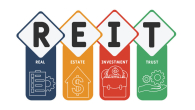
Commercial Loans for Multifamily – How to buy Apartments
Using commercial loans to purchase a multifamily property can be an effective strategy for real estate investment. Here are several ways to leverage these loans:
1. Traditional Bank Loans
Description:
Traditional bank loans are one of the most common methods to finance a multifamily property. These loans are provided by banks or credit unions and usually have fixed or variable interest rates.
Steps:
- Pre-Approval: Obtain pre-approval to understand how much you can borrow.
- Property Search: Find a multifamily property within your budget.
- Application: Submit a detailed loan application including financial statements, tax returns, and information about the property.
- Appraisal and Underwriting: The lender will appraise the property and underwrite the loan, assessing your creditworthiness and the property’s income potential.
- Approval and Closing: Once approved, you’ll receive the funds to purchase the property.
Advantages:
- Lower interest rates.
- Fixed monthly payments (if fixed-rate loan).
Disadvantages:
- Lengthy approval process.
- Stringent qualification requirements.
2. FHA Multifamily Loans
Description:
The Federal Housing Administration (FHA) offers loans specifically for multifamily properties, including acquisition, refinancing, and rehabilitation.
Programs:
- FHA 221(d)(4): For new construction or substantial rehabilitation.
- FHA 223(f): For purchasing or refinancing existing properties.
Steps:
- Qualification: Ensure the property and your credit profile meet FHA standards.
- Application: Submit an application through an FHA-approved lender.
- HUD Review: The Department of Housing and Urban Development (HUD) reviews the application.
- Approval and Funding: Once approved, funds are disbursed for the purchase.
Advantages:
- Lower down payment requirements (as low as 3.5%).
- Non-recourse loans, meaning the lender can’t pursue your personal assets in case of default.
Disadvantages:
- Mortgage insurance premiums.
- Strict property and borrower requirements.
3. Commercial Mortgage-Backed Securities (CMBS) Loans
Description:
CMBS loans are secured by a first-position commercial mortgage and then sold to investors as securities.
Steps:
- Broker: Work with a commercial mortgage broker who deals in CMBS loans.
- Application: Provide comprehensive financial and property details.
- Securitization: The loan is bundled with other loans and sold as securities.
- Servicing: Loan is serviced by a third-party company.
Advantages:
- Fixed interest rates.
- Non-recourse loans.
Disadvantages:
- More complex underwriting process.
- Less flexibility in loan terms.
4. Bridge Loans
Description:
Bridge loans are short-term loans used to “bridge” the gap until long-term financing is secured or the property is stabilized.
Steps:
- Immediate Need: Identify the need for short-term financing, often for property renovation or quick acquisition.
- Lender: Approach lenders who specialize in bridge loans.
- Application and Approval: Submit a streamlined application for quick approval.
- Use of Funds: Use the funds to acquire or improve the property.
- Refinancing: Once the property is stabilized, refinance into a permanent loan.
Advantages:
- Fast approval and funding.
- Useful for properties needing significant renovation.
Disadvantages:
- Higher interest rates.
- Shorter loan terms.
5. Small Business Administration (SBA) Loans
Description:
SBA loans, particularly the SBA 7(a) and SBA 504 programs, can be used for multifamily properties under certain conditions, like if part of the property is used for a business.
Steps:
- Eligibility: Ensure the property and your business qualify under SBA guidelines.
- Application: Apply through an SBA-approved lender.
- Approval and Funding: Upon approval, receive the funds to purchase the property.
Advantages:
- Lower down payments.
- Favorable terms and interest rates.
Disadvantages:
- Stringent eligibility requirements.
- Lengthy approval process.
6. Private Loans and Hard Money Loans
Description:
Private loans and hard money loans come from private investors or companies and are based more on the property value than borrower’s creditworthiness.
Steps:
- Private Lenders: Identify private lenders or hard money lenders who specialize in real estate.
- Application: Present the property’s value and potential income.
- Approval and Funding: Receive quick approval and funding based on the property’s value.
Advantages:
- Fast approval and funding.
- Less emphasis on personal credit score.
Disadvantages:
- Higher interest rates.
- Shorter loan terms, requiring quicker repayment or refinancing.
By understanding these various loan options, you can choose the best financing method for your multifamily property investment, considering factors like interest rates, loan terms, eligibility requirements, and approval speed.
Here’s a table comparing different types of loans for purchasing a multifamily property:
| Loan Type | Description | Interest Rates | Down Payment | Term Length | Key Advantages | Key Disadvantages |
|---|---|---|---|---|---|---|
| Traditional Bank Loans | Conventional loans from banks or credit unions. | Fixed or variable | 20%-30% | 15-30 years | Lower interest rates, fixed monthly payments | Stringent qualification, lengthy approval process |
| FHA Multifamily Loans | Government-backed loans for multifamily properties (e.g., FHA 221(d)(4), FHA 223(f)). | Competitive | 3.5%-10% | Up to 35 years | Lower down payments, non-recourse | Mortgage insurance premiums, strict requirements |
| CMBS Loans | Loans securitized and sold to investors as commercial mortgage-backed securities. | Fixed | 20%-30% | 5-10 years | Fixed interest rates, non-recourse | Complex underwriting, less flexible terms |
| Bridge Loans | Short-term loans used until long-term financing is secured. | Higher | 10%-20% | 6 months to 3 years | Fast approval, useful for renovation | Higher interest rates, short terms |
| SBA Loans | Loans from the Small Business Administration for mixed-use or partially owner-occupied properties. | Competitive | 10%-20% | 10-25 years | Lower down payments, favorable terms | Stringent eligibility, lengthy approval process |
| Private and Hard Money Loans | Loans from private investors or companies based on property value rather than credit. | Higher | 10%-20% | 6 months to 5 years | Fast approval, less credit emphasis | Higher interest rates, shorter terms |
This table summarizes the key features, advantages, and disadvantages of each loan type, helping you to make an informed decision based on your specific needs and circumstances when purchasing a multifamily property.









Leave a Reply